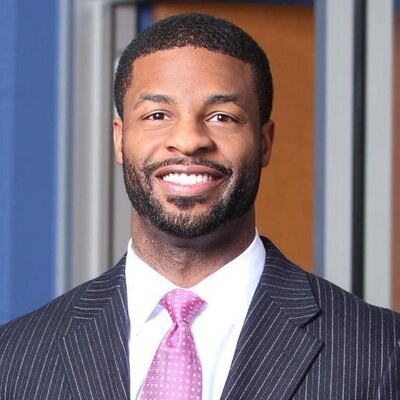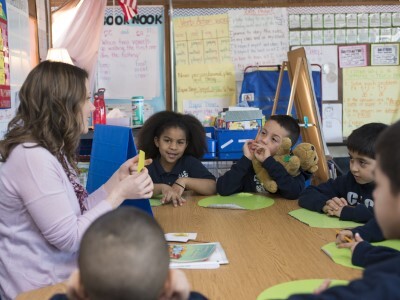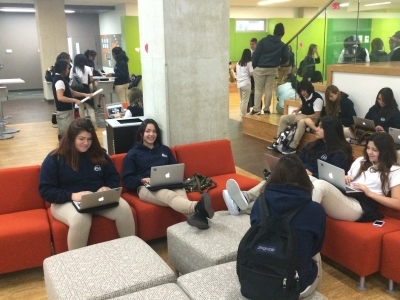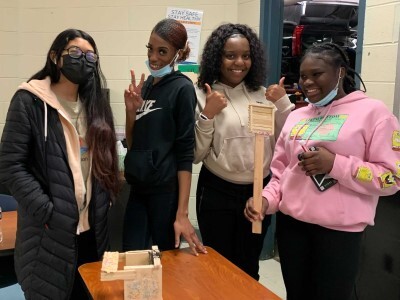Understanding The Human Element of Blended Learning
Topics
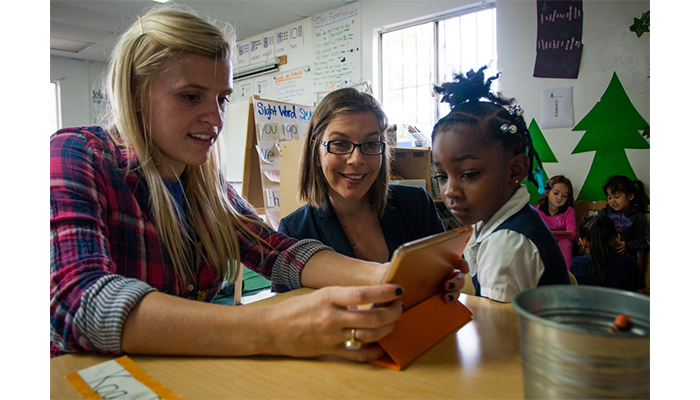
We’ve all had the experience of truly purposeful, authentic learning and know how valuable it is. Educators are taking the best of what we know about learning, student support, effective instruction, and interpersonal skill-building to completely reimagine schools so that students experience that kind of purposeful learning all day, every day.
Without the human element, the disruptive innovation of blended learning, specifically in the urban setting, does not survive as anything more than theory.
Excerpts from this guest post originally appeared on the blog BlendMyLearning.com
Much has been written about this disruptive innovation changing public education called Blended Learning. By now we know the basic tenants of blended learning leverages technology to create a more student-centered educational experience. Whether the blended model is an in class rotation or a more ambitious flex model, teachers now have a chance to give direct instruction to smaller more targeted groups of students. From the construction of the transcontinental railroad in 1869 to dawn of the internet era, a true disruptive innovation allows a product to be produced or reach people faster and cheaper. By all accounts, the theory of blended learning represents the term disruptive innovation well. But without the human element, this disruptive innovation- specifically in the urban setting- does not survive as anything more than theory.
Urban Education and Blended Learning
My focus is in urban education. Our students are 100% African-American, all but two live within Detroit city limits, and almost all receive free or reduced price lunch. It is widely accepted that students who come from high crime and poverty areas like Detroit have many of the same problems as their middle class counterparts. But the urban child’s problems are dramatically worse. The urban child sees drug and alcohol abuse at a rate much higher rate as well as domestic violence, child abuse, obesity, mental illness, homelessness, and hunger.
Amidst all these problems, our society is tasked to give these students an educational opportunity equal to that of their middle class counterparts. But there is also a widely accepted achievement gap between the demographic of our students to those of considerably more affluence and privilege. Urban education is in desperate need of an educational model that allows the flow of education content to move faster. As a result of the achievement gap, the urban child needs to learn more in a shorter time in order to catch up to their counterparts. Blended learning can be a tool to help unlock the goals and dreams of our urban children, but this alone won’t be enough.
My students represent the core of the achievement gap. Our 75 students are all in the 9th grade but come to us with an average 6th grade reading proficiency and 4th grade math competency. What is most telling is that these students come from 32 different primary schools all across Detroit and surrounding suburbs that encompass private, traditional public and charter education. Our students represent the full spectrum of education, but their needs have not been met. As we move into the second half of our first school year, three questions arise regarding the human element of blended learning:
- What role do adults play in the facilitation of our blended learning program?
- What is the focus of human interaction?
- How can we provide this?
Teaching Positive Behavior
Typically in education we teach math; science; English; and social studies but we punish behavior. Most expectations of positive behavior is based on a middle class value system that has often times never been modeled to urban children. Many schools simply expect students to speak at a quiet volume during their break time and actively listen while often dismissing the societal factors that may hampers them from doing these things.
We believe that you cannot teach the content areas without teaching and modeling positive behavior. These middle class values will be so vital to the success of our students. The first human element in blended learning is the ability to teach the urban child this middle class value system that our country holds so dear. We must teach active listening as well as algebra. We must teach respect with the same voracity as we teach reading.
Originally, my thought was to create a type of wraparound system to support all of our students similar to what has been used in foster care. The Wraparound Philosophy puts the child in the center of their social and emotional development. But we found that Wraparound is very time intensive and does not mirror the variety of social and emotional needs for adolescent children specifically in a school setting.
After speaking with leaders in the field, all fingers pointed specifically to Positive Behavior Interventions and Support (PBIS). We use PBIS as a school wide system for teaching positive behavior with three universal expectations for every child: Respect, Responsible, and Safe. Respectfulness, responsibility and safety look different in various areas of student life. It is important to specifically teach these expectations in the classrooms as well as the bathrooms, as well as the hallways. We have many banners in all areas of the building that specifically outline our universal expectations in that particular space.
Our PBIS system is very data driven and multi-tiered. This is evident through our signature card program. Here, students are given blank signature cards that all adults in our building may sign when a student demonstrates respectfulness, responsibility or safety. When a student’s card is filled, it gets put into a drawing at the end of the month for gift cards. This achieves two things: We are incentivizing positive behavior and we are collecting valuable data of what is working well and areas in need of improvement.
As a part of our multi-tiered PBIS system, students who are identified as high risk of dropping out are placed in RENEW. RENEW was developed out of the University of New Hampshire and has many similarities to wraparound philosophy. The child is in the center of their social and emotional development and dives deep into the things they do well and sets goals with the positive people in their lives.
Our PBIS system for teaching positive behavior is very human intensive. We feel that teaching positive behavior is just as important to student success as any component to our blended learning program. Our entire staff understands the value of PBIS but is constantly pushing to continue to implement with fidelity. Our PBIS team meets once per week to discuss our incentives, practices, and areas of need. Although I’m a member of the team, our PBIS coach is a member of our teaching staff and we have also included a student elected by his peers to be a member of our PBIS team. Just as teaching academic content, teaching positive behavior takes real engagement and commitment on the part of all educational stakeholders.
“Apparently I don’t get this…can you figure this out for me?”
Understanding and exhibiting positive behavior alone will not translate into success. One of the most vexing areas of implementation is teaching our students the right way to fail. More specifically, it is the skill of failing and trying again until mastery is achieved. Many call this skill grit, self-determination or perseverance. Our adults must teach this skill to our students with the understanding that successful people cannot not simply rely on cognitive ability.
Our blended learning model is purely competency based where students are not moved until they exhibit content mastery. But many of our students are four to five grades behind their grade level and have experienced failure throughout school. Often times, they are skilled at distracting adults with negative behavior to hide their insecurities (Ever more the reason to implement PBIS).
We cannot simply put students in front of the computer and expect them to continue to try even when they are accustomed to failing. It takes a human compassion to motivate students. We can’t expect that our students will no longer be frustrated just because they are learning at their own pace. Learning is a messy process that is supposed to be comprised of both failures and successes. Students who are accustomed only to failure and not to success require caring adults that motivate and teach the -character traits of grit, perseverance and self-determination. This is especially true in a blended learning classroom.
The human element is needed most at CCHHS when students are in the “pod” working on their online content. This is ironic because theoretically, this should be the time that should free educators for higher order tasks. The time our students are spending online is a daily exercise in intrinsic and extrinsic motivation. There is a constant yet delicate balance between keeping students on task and allowing them the freedom to be self-motivated.
Students cannot fake an interactive online experience. In a traditional class, students who are quiet and not distracting can take many more mental time outs without being noticed. In this regard, our pod supervisor has one of the most difficult tasks. In fact, his role could be more aptly named, “Pod Motivator.” If a student is daydreaming or unfocused, it is his responsibility to motivate, encourage and inspire. This is no easy task and we are constantly reflecting on better ways to foster the intrinsic motivation that is necessary to succeed in a blended learning classroom.
Our adults must decipher between intervening and allowing students to struggle and make mistakes. The human element is needed to show compassion when students don’t understand a concept. But this is also needed to recognize when to encourage a student to persevere to figure a concept on their own.
Final Thoughts
Many of the topics discussed revolve around the necessity of human capital in a blended learning classroom. As our school culture continues to form, it becomes more evident that our purpose is to equip our students with positive behavior and self-determination. Our blended learning program aims to leverage technology to achieve this purpose.

